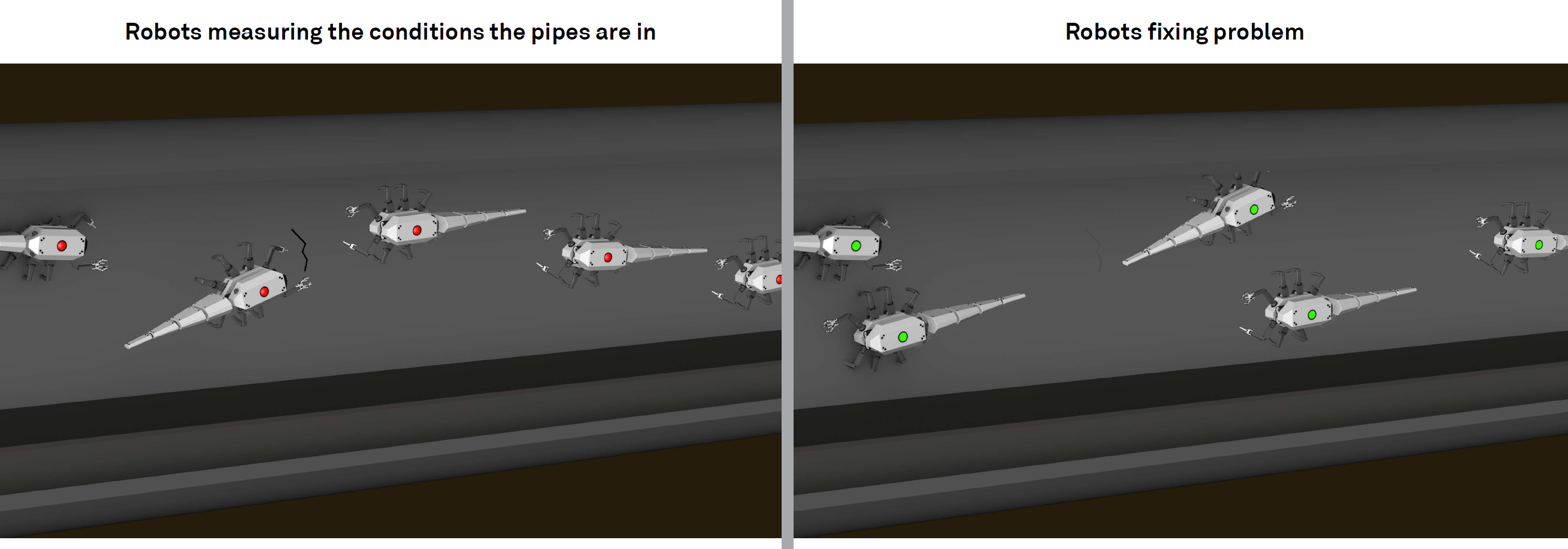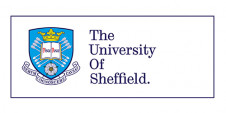Inspecting and restoring water infrastructures using robotic autonomous systems
Can the water industry benefit from technologies advanced and developed in other industries? Can we develop autonomous robots to replace human intervention in the monitoring and restoration of buried infrastructure?
“Why do we need humans for pipe inspection when swarms of tiny robots can be developed to inspect it for us pervasively?”
Nature-inspired pervasive sensing through swarms is a key part of the future of remote sensing. Research shows that although the individuals in a swarm may have rather poor sensing abilities, the overall sensing behaviour of the swarm can emerge as highly sophisticated. As a result, pervasive sensing is a rapidly-developing discipline that until now has been focused mainly on manufacturing, airspace, defence and bio-medical applications, i.e. where sensing of a delicate, very large or poorly accessible environment is required.
Strangely enough the idea of pervasive sensing has never been applied to inspect networks of buried water pipes which are hidden below the ground. These networks are vast and regular inspection of these assets is essential for their proactive maintenance and rehabilitation. In Europe, the total value of the sewer assets amounts to €2 trillion. The US EPA estimates that water collection systems in the USA have a total replacement value between $1 and $2 trillion. In China alone 40,000 km of new sewer pipes are laid every year. Similar figures can be assigned to other types of buried pipe assets which supply clean water and gas. However, little is known about the conditions these pipes are in despite that fact that water and gas supply utility companies are under pressure to ensure that these pipes operate continuously, safely, and efficiently. One reason for this is a lack of special science and technology for pervasive sensing and rehabilitation with autonomous robotic swarms.

This research theme will develop the framework for production and deployment of co-operative RAS for inspection and rehabilitation of water infrastructure. By 2065 we propose that RAS are permanently deployed within water infrastructure to minimise human intervention so dramatically reducing costs and improving safety. RAS which can service water infrastructure do not exist so fundamental research, development and implementation is required.
The theme has three main activities:
- Currently, there are no understanding of specific requirements for robotic systems which can inspect autonomously the vast network of buried pipes which carry clean and wastewater. Therefore, the first activity will be to create technical specification for future water infrastructure autonomous robotic devices and operational procedures these devices should follow.
- Currently, there are no models which can simulate accurately the behaviour of autonomous robotic systems under the realistic conditions typically found in buried clean and wastewater pipes. Therefore, the second activity will be to develop and to carry out computer simulations to demonstrate that these devices can navigate, communicate, cooperate and inspect the buried pipe network.
- The final activity will be to carry out laboratory demonstration and secure follow-on R&D projects to manufacture, program and train robots to inspect and rehabilitate buried pipes. An essential element of this activity will be to bring together through the Hub the RAS manufacturers and water industry to explore the potential market for RAS solutions and develop a strategy for economically-viable water industry implementation.
Over the longer term we will work with the wider academic, government and industry community to extend the work in Twenty65 to deliver the roadmap vision for applications of autonomous, cooperative robots for buried pipe inspection and rehabilitation.
How can people get involved?
There are clear opportunities for other researchers and non-academic stakeholders to get involved with:
- Development of new navigation and communication means for operation in underground pipes.
- Development of new technology for micro-machine printing of miniature robots.
- Development of new sensor solutions for robots cooperative and their integration.
- Building and testing new robotic prototypes.
- Market exploitation.
Please contact the Water Innovation Hub at twenty65@sheffield.ac.uk if you are interested in collaborating on any aspect of this research.
